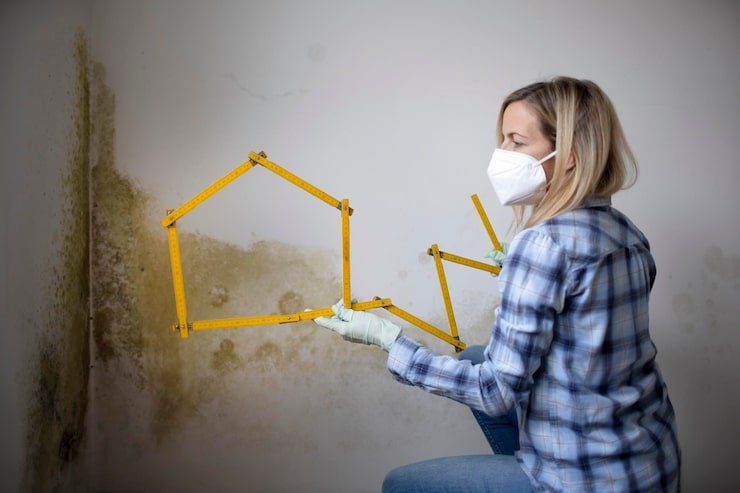Understanding Common Causes of Mold in Attics and Its Potential Health Effects – Identifying Mold Problems
- admin323029
- Blog

Mold in the attic is a common problem that many homeowners face, often without realizing it until the damage has already been done. While attics are out of sight, mold growth in this area can lead to structural damage, reduced indoor air quality, and health issues for those living in the home. In this blog, “Identifying Mold Problems”, we will explore the common causes of attic mold and its potential health effects, as well as offer tips for prevention.
Common Causes of Mold in Attics – Identifying Mold Problems
Mold thrives in environments that provide moisture, warmth, and organic material. Attics can become the perfect breeding ground for mold under the right conditions. Here are some of the most common causes:
1. Poor Ventilation
Improper ventilation is one of the leading causes of mold growth in attics. Without adequate airflow, warm, moist air becomes trapped, creating a humid environment that is ideal for mold. This often occurs in attics with blocked or insufficient vents.
2. Roof Leaks
Even a small roof leak can introduce water into the attic, leading to damp insulation, wood, or drywall. Persistent moisture from a leak provides a consistent source of hydration for mold spores, allowing them to proliferate.
3. Improper Bathroom or Kitchen Ventilation
When bathroom or kitchen exhaust fans vent directly into the attic instead of outside, they deposit warm, moist air into the space. Over time, this trapped moisture can lead to mold growth.
4. Inadequate Insulation
Poor insulation can lead to condensation buildup in the attic. When warm air from the living spaces below rises and meets the cooler air in the attic, condensation forms on surfaces like wood or insulation, creating a damp environment that encourages mold.
5. Ice Dams
In colder climates, ice dams form when heat escapes through the roof, melting snow. The melted snow refreezes at the roof’s edge, trapping water behind it. This water can seep into the attic and cause mold.
Potential Health Effects of Mold
Mold in the attic can have far-reaching effects on the health of a home’s occupants, especially when spores travel into the living areas. Here are some of the common health concerns associated with mold exposure:
1. Respiratory Issues
Mold spores can irritate the respiratory system, leading to symptoms such as coughing, sneezing, and wheezing. Individuals with asthma or chronic respiratory conditions may experience exacerbated symptoms.
2. Allergic Reactions
Mold exposure can trigger allergic reactions in sensitive individuals. Symptoms may include nasal congestion, runny nose, itchy eyes, and skin irritation.
3. Sinus Infections
Chronic exposure to mold can increase the risk of sinus infections, as the spores irritate and inflame nasal passages.
4. Mycotoxin Exposure
Certain types of mold produce mycotoxins, which can cause more severe health issues, such as fatigue, dizziness, headaches, and even neurological problems in extreme cases.
5. Weakened Immune System
People with weakened immune systems, including infants, the elderly, and those undergoing medical treatments, are particularly vulnerable to mold-related health problems.
Preventing Mold in the Attic
Preventing mold in your attic requires proactive steps to address the common causes:
- Ensure Proper Ventilation: Install and maintain ridge vents, soffit vents, or gable vents to promote airflow and reduce humidity.
- Fix Roof Leaks Promptly: Regularly inspect your roof for damage and repair leaks immediately.
- Direct Exhaust Fans Outdoors: Ensure that bathroom and kitchen exhaust fans vent directly to the exterior of the home.
- Improve Insulation: Proper insulation helps prevent condensation by maintaining a consistent temperature.
- Manage Ice Dams: Use roof rakes to remove snow and install heat cables to prevent ice dams from forming.
Final Thoughts
Addressing attic mold promptly and effectively is essential for the health of your home and family. Regular inspections, proper maintenance, and a focus on moisture control can go a long way in preventing mold from taking hold. If you suspect mold in your attic, consult a professional mold inspector to assess the situation and recommend remediation steps.
Protect your home and your health by staying vigilant against the common causes of attic mold. A little prevention now can save you significant trouble and expense in the future.
Are you worried about the cleanliness of your space?
Let us help you! Cleaning services are our specialty, and we offer a complete range of cleaning and maintenance services. Get a free estimate!




